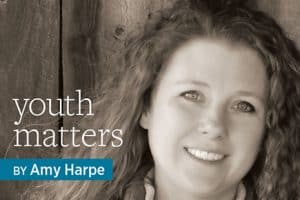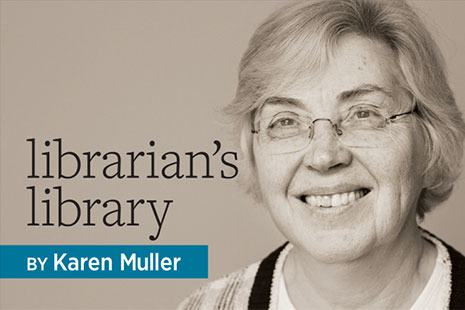
The public library is the face of librarianship for many outside the profession. It’s a ubiquitous space that serves not only as an information repository but also as a community resource. New titles on public librarianship address its many facets and spheres of influence.
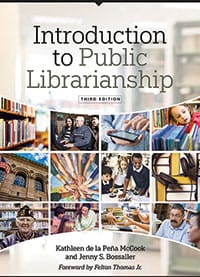 The afterword in Introduction to Public Librarianship, 3rd edition, by Kathleen de la Peña McCook and Jenny S. Bossaller, captures the essence of public librarianship. In it, Katharine Phenix, adult services librarian at Anythink Libraries in Adams County, Colorado, describes how her work makes a difference: “Libraries will be there, collecting, organizing, and making [materials] available to anyone who comes in the door, or portal, or hologram,” she writes. Chapters address how to administer public libraries to make a difference in people’s lives. The first chapters examine public library history, the push toward equity of access, finance, accountability, staffing, facilities, and services to youth and adults. But libraries do not work alone. The final chapters provide an overview of numerous networks for local and international collaboration. Some are longstanding, such as sharing catalog records; others are newer. Some are greatly enhanced by technology, others less so. Intended as a textbook, its detailed research and exhaustive references make this a valuable volume for new and seasoned librarians. ALA Neal-Schuman, 2018. 416 P. $72. PBK. 978-0-8389-1506-6.
The afterword in Introduction to Public Librarianship, 3rd edition, by Kathleen de la Peña McCook and Jenny S. Bossaller, captures the essence of public librarianship. In it, Katharine Phenix, adult services librarian at Anythink Libraries in Adams County, Colorado, describes how her work makes a difference: “Libraries will be there, collecting, organizing, and making [materials] available to anyone who comes in the door, or portal, or hologram,” she writes. Chapters address how to administer public libraries to make a difference in people’s lives. The first chapters examine public library history, the push toward equity of access, finance, accountability, staffing, facilities, and services to youth and adults. But libraries do not work alone. The final chapters provide an overview of numerous networks for local and international collaboration. Some are longstanding, such as sharing catalog records; others are newer. Some are greatly enhanced by technology, others less so. Intended as a textbook, its detailed research and exhaustive references make this a valuable volume for new and seasoned librarians. ALA Neal-Schuman, 2018. 416 P. $72. PBK. 978-0-8389-1506-6.
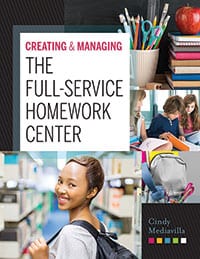 A solid overview can provide a road map to establishing services, but sometimes detailed directions are needed. Creating and Managing the Full-Service Homework Center, by Cindy Mediavilla, walks through the steps of creating such a center. She starts by pointing out the advantages of homework centers—libraries are a safe place, working in a homework center does not connote remedial assistance, and evidence points to positive outcomes—then moves to community assessment, policies needed, and ways to evaluate success. Establishing a center involves the community, whether for funding partners, volunteer resources, or school collaboration. Decisions must also be made about space, locations, supplies, hours, and policies on security and behavioral expectations. Mediavilla provides talking points and examples throughout the book. ALA Editions, 2018. 184 P. $54. PBK. 978-0-8389-1618-6.
A solid overview can provide a road map to establishing services, but sometimes detailed directions are needed. Creating and Managing the Full-Service Homework Center, by Cindy Mediavilla, walks through the steps of creating such a center. She starts by pointing out the advantages of homework centers—libraries are a safe place, working in a homework center does not connote remedial assistance, and evidence points to positive outcomes—then moves to community assessment, policies needed, and ways to evaluate success. Establishing a center involves the community, whether for funding partners, volunteer resources, or school collaboration. Decisions must also be made about space, locations, supplies, hours, and policies on security and behavioral expectations. Mediavilla provides talking points and examples throughout the book. ALA Editions, 2018. 184 P. $54. PBK. 978-0-8389-1618-6.
Similarly, Ann Roberts in  starts with the need for community assessment and evaluation of services. She walks through possible services for different community demographics, including the emerging adult population ages 18–24 in one chapter and ages 25–30 in the next, recognizing the granularity of services that should be considered to be responsive to every demographic need. Chapters on older adults address these patrons and their caregivers. Stressing inclusivity, Roberts offers tips for serving new immigrants, disabled patrons, and the incarcerated. She also includes forms, specific collection development suggestions, and a competencies checklist. Libraries Unlimited, 2017. 177 P. $45. PBK. 978-1-4408-5254-1. (Also available as an ebook.)
starts with the need for community assessment and evaluation of services. She walks through possible services for different community demographics, including the emerging adult population ages 18–24 in one chapter and ages 25–30 in the next, recognizing the granularity of services that should be considered to be responsive to every demographic need. Chapters on older adults address these patrons and their caregivers. Stressing inclusivity, Roberts offers tips for serving new immigrants, disabled patrons, and the incarcerated. She also includes forms, specific collection development suggestions, and a competencies checklist. Libraries Unlimited, 2017. 177 P. $45. PBK. 978-1-4408-5254-1. (Also available as an ebook.)
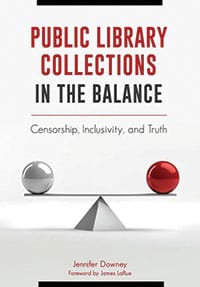 Intellectual freedom is a core value of librarianship. In Public Library Collections in the Balance: Censorship, Inclusivity, and Truth, Jennifer Downey reviews the history of censorship in US public libraries, charting an evolution from the provision of “worthy” reading to the Library Bill of Rights in 1939 to today’s broad definition of the “freedom to read.” Downey reviews the types of materials that are challenged, either for content or format; issues surrounding internet access; and tips on how to respond to complaints. Also useful are discussions on the importance of understanding one’s community, overcoming personal biases in selection, and balancing demand for popular and quality material. Libraries Unlimited, 2017. 203 P. $55. PBK. 978-1-4408-4964-0. (Also available as an ebook.)
Intellectual freedom is a core value of librarianship. In Public Library Collections in the Balance: Censorship, Inclusivity, and Truth, Jennifer Downey reviews the history of censorship in US public libraries, charting an evolution from the provision of “worthy” reading to the Library Bill of Rights in 1939 to today’s broad definition of the “freedom to read.” Downey reviews the types of materials that are challenged, either for content or format; issues surrounding internet access; and tips on how to respond to complaints. Also useful are discussions on the importance of understanding one’s community, overcoming personal biases in selection, and balancing demand for popular and quality material. Libraries Unlimited, 2017. 203 P. $55. PBK. 978-1-4408-4964-0. (Also available as an ebook.)
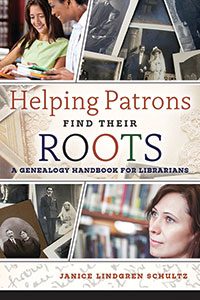 There are many reasons someone might turn to the library for genealogical assistance, a specialized reference skill. With Helping Patrons Find Their Roots: A Genealogy Handbook for Librarians, Janice Lindgren Schultz, former manager of the Midwest Genealogical Center in Independence, Missouri, provides a guide for the nonspecialists among us. She discusses how to develop a family tree while also evaluating its “leaves” to understand more about the times and places in which our ancestors lived. She covers the basics of record types and their contents, along with advanced topics like military and church records, international resources, and reconciling conflicting information. The final chapter provides tips on collection development and training. ALA Editions, 2018. 240 P. $59. PBK. 978-0-8389-1644-5.
There are many reasons someone might turn to the library for genealogical assistance, a specialized reference skill. With Helping Patrons Find Their Roots: A Genealogy Handbook for Librarians, Janice Lindgren Schultz, former manager of the Midwest Genealogical Center in Independence, Missouri, provides a guide for the nonspecialists among us. She discusses how to develop a family tree while also evaluating its “leaves” to understand more about the times and places in which our ancestors lived. She covers the basics of record types and their contents, along with advanced topics like military and church records, international resources, and reconciling conflicting information. The final chapter provides tips on collection development and training. ALA Editions, 2018. 240 P. $59. PBK. 978-0-8389-1644-5.
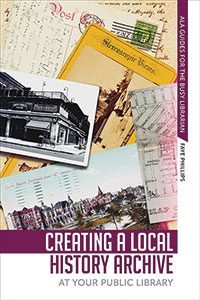 Local history is closely related to genealogy. Part of the American Library Association Guides for the Busy Librarian series, Faye Phillips’s Creating a Local History Archive at Your Public Library begins with a brief review of local history in public library collections, followed by a discussion of strategic decisions to ponder when considering one. The meat of the book progresses through the steps of collection management: acquisition; processing, accessioning, and description; providing access; and care. ALA Editions, 2018. 176 P. $57. PBK. 978-0-8389-1566-0.
Local history is closely related to genealogy. Part of the American Library Association Guides for the Busy Librarian series, Faye Phillips’s Creating a Local History Archive at Your Public Library begins with a brief review of local history in public library collections, followed by a discussion of strategic decisions to ponder when considering one. The meat of the book progresses through the steps of collection management: acquisition; processing, accessioning, and description; providing access; and care. ALA Editions, 2018. 176 P. $57. PBK. 978-0-8389-1566-0.


